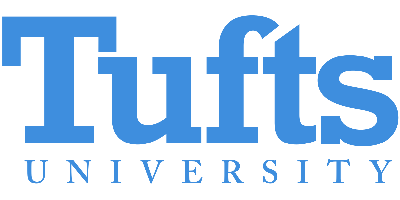Research Assistant - Department of Research
 Tufts University Tufts University | |
 United States, Massachusetts, North Grafton | |
 Mar 16, 2025 Mar 16, 2025 | |
|
Overview
The Comparative Pathology and Genomics Shared Resource (CPGSR) is housed within the Office of Research overseen by the Associate Dean of Research, Dr. Cheryl London and offers capacity for detailed assessment of animal models of human disease to Cummings School scientists and clinicians and the broader Tufts research community, other academic institutions, and regional biotech and pharmaceutical companies. The CPGSR aims to improve human translational outcomes (i.e., treatment and prevention) through detailed characterization of animal models across species at the clinical, pathologic and genomic levels. The core is housed in the newly renovated 3622 sq ft, Amelia Peabody Pavilion at Cummings School of Veterinary Medicine at Tufts University. The total space for histopathology research is 1303 sq ft with three dedicated research bays and two chemical hoods, specimen storage, and equipment benches designed to accommodate up to three microtomes. The core is co-directed by Dr. Martinot (comparative pathology), a board-certified veterinary pathologist, with a staff of certified histotechnicians, and Dr. Gardner (boarded comparative oncology and genomics), a boarded veterinary internist and oncologist specializing in genetics. The shared resource provides advanced histopathology, digital imaging, hi-plex immunofluorescence (Panoramic Midi II Digital slide scanner), and comparative genomics including spatial profiling and analysis of RNA and DNA, (Nanostring GeoMx Spatial Profiler, Nanostring CosMx Spatial Molecular Imager, nCounter Max, Illumina NextSeq 2000, 10X chromium controller, Agilent tapestation and Biomek i7 liquid handling system) and image analysis (HALO Indicalabs quantitative image analysis software). Together, this resource brings a core set of services designed to assess, credential, and utilize a wide variety of animal model systems of disease more accurately. Services include processing of tissue samples (e.g. paraffin embedding, sectioning, routine hematoxylin and eosin staining, special stains, RNAscope in situ hybridization, and immunohistochemistry) optimized for a number of animal species including mouse, rat, hamster, canine, porcine, and non-human primates). What You'll Do Reporting to the Associate Dean, the research assistant will work in the CPGSR under the day-to-day direction of Drs. Amanda Martinot and Heather Gardner at Cummings School of Veterinary Medicine at Tufts University. The primary focus of the position is to help optimize and complete research tasks in the laboratory focused on a variety of data management and molecular techniques. The individual will be expected to undertake basic histology techniques and NGS library preparation techniques after training. The individual will work independently under the direction of Drs. Martinot and Gardner to optimize new assays / techniques, analyze and interpret datasets, and assist in preparation of assay results for CPGSR users, monitor digital platforms for experiment requests and initiate experimental tasks. Additional work includes assisting lab members with general lab maintenance, coordinating on-site instrument maintenance, record keeping and ordering supplies. The position will require substantial digital data recording and general maintenance of equipment and lab records. The individual will be expected to take on new and/or additional duties as skills improve and as lab needs change. The research assistant must have a strong foundation in molecular laboratory techniques and digital data platforms. Additionally, the research assistants will need to perform a wide range of detailed techniques and must be able to learn new tasks / techniques rapidly. Prior histology or NGS experience is beneficial, but not required. Essential functions as a Research Assistant in CPGSR will be:
What We're Looking For Basic Requirements:
Preferred Qualifications:
Pay Range Minimum $48,500.00, Midpoint $60,750.00, Maximum $73,000.00 Salary is based on related experience, expertise, and internal equity; generally, new hires can expect pay between the minimum and midpoint of the range. | |


